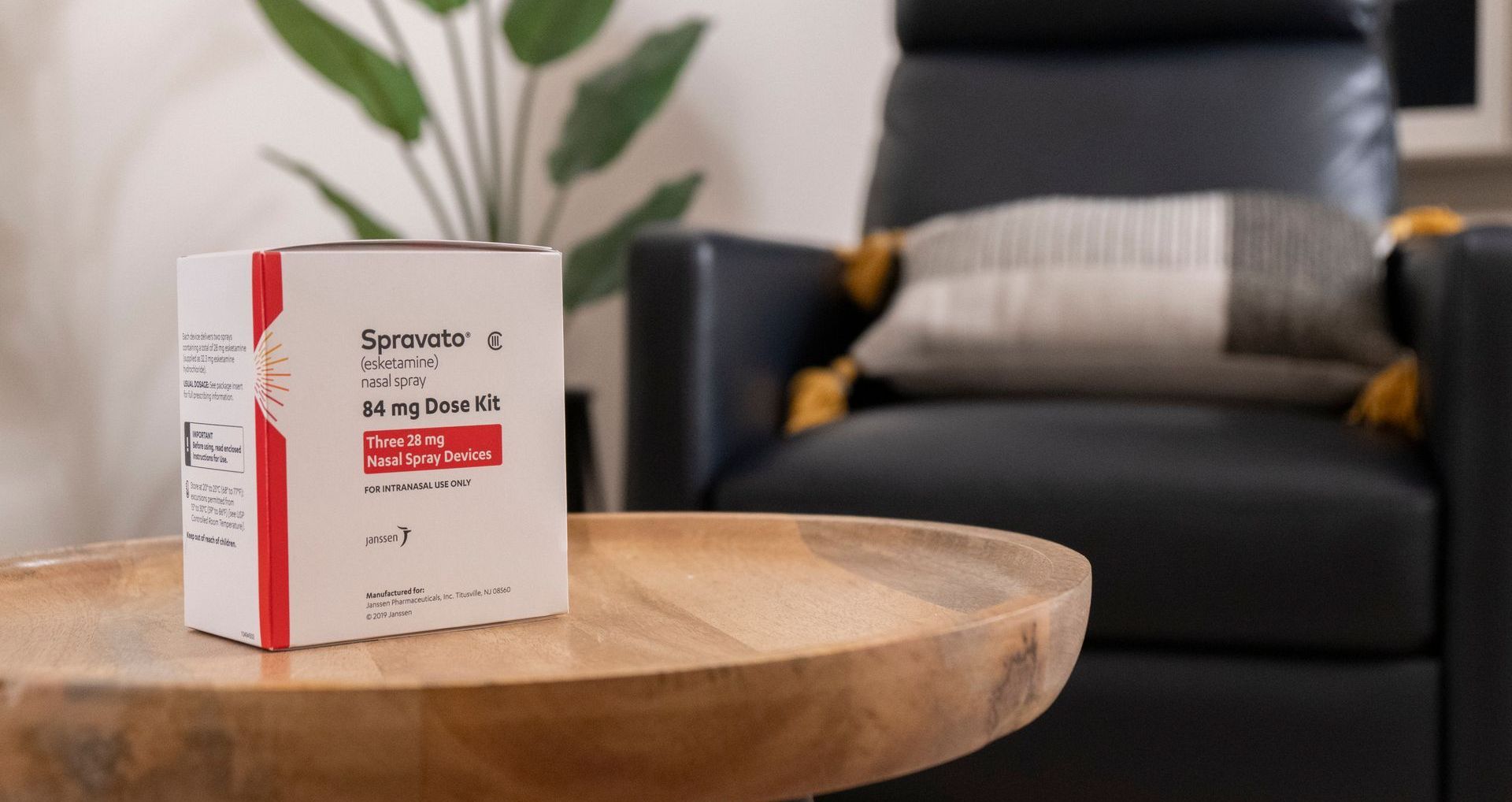A history of seizures (relative contraindication)
How TMS Works
Overview
How Does TMS Therapy Work?
Transcranial Magnetic Stimulation (TMS) is a non-invasive brain stimulation technique that was mostly used for research purposes to understand processes that occur in the brain. With further use, its therapeutic benefit became known. TMS’ increasing popularity and successful clinical outcomes have earned its FDA approval for several uses, including treatment-resistant depression, anxiety associated with depression, and obsessive-compulsive disorder (OCD).
TMS’ therapeutic effect comes from electromagnetic pulses created by a metal coil in the TMS device. The metal coil is contained in a device that is placed external to the skull. When the metal coil is activated, the electromagnetic pulse can increase or decrease neural activity in targeted brain areas.

Our Technology: Magstim Horizon 3.0 Pro with StimGuide+
At Elevium Health, we implement cutting-edge technology with the Magstim Horizon 3.0 Pro with StimGuide+. The groundbreaking element of this system is the stereotactic neuronavigation feature that allows precision in brain stimulation.
This advanced neuronavigation technology more accurately maps each client’s unique brain structure using external landmarks on the skull, accounting for individual differences in head shape. From this map, the target areas for treatment are determined and confirmed by one of our highly trained physicians. The system constantly monitors the exact stimulation location to ensure the coil is consistently placed over the correct location throughout every single session. By executing targeted stimulation, the procedure optimizes treatment outcomes.
Precise stimulation is critical for successful TMS outcomes because electromagnetic pulses are to be delivered to specific areas of the brain according to the client’s symptom profile and therapy goals. By targeting different brain networks, it aims to alter brain activity associated with specific neural processes.
Is TMS Safe?
TMS is a safe alternative to other therapies that may not have produced the results clients wish to achieve.
- It is a non-invasive method to alter neural activity.
- Unlike other therapies, such as electroconvulsive therapy, the client remains conscious and is safe to re-commence daily activities after their session.
- The intensity of electromagnetic pulses is measured and controlled for each client to ensure the correct amount of energy is delivered for optimal results.
In order to ensure the technology is being used appropriately and safely, clients must be screened for any conditions or metal implants that are contraindications of TMS. These can include:
Are There Side Effects?
As with any therapy, there is a risk of side effects. Most side effects are mild, and clients report them dissipating over a few hours post-session. The occurrence of these side effects tends to decrease after the first few sessions. These include scalp discomfort at the site of stimulation and headaches. Most often, this can be resolved with over-the-counter pain medication.
Though possible, it is rare that TMS may cause serious side effects. Importantly, a history of seizures is a relative contraindication for TMS treatment, meaning some individuals with a history of seizures may still be eligible after a thorough evaluation and discussion with one of our doctors. Your eligibility for TMS treatment will be carefully assessed by our highly qualified medical professionals before beginning treatment.
Learning Center
Featured Resources

What to Expect
Ketamine therapy, TMS, Spravato, psychotherapy, or medication, here’s what you can expect before, during, and after each type of care.

Compare Treatments
Unsure which treatment is right for you? Explore a side-by-side comparison to better understand your options and find the best fit.

How Spravato Works
A fast-acting nasal spray for depression. FDA-approved and administered under medical supervision to reduce symptoms quickly and safely.










